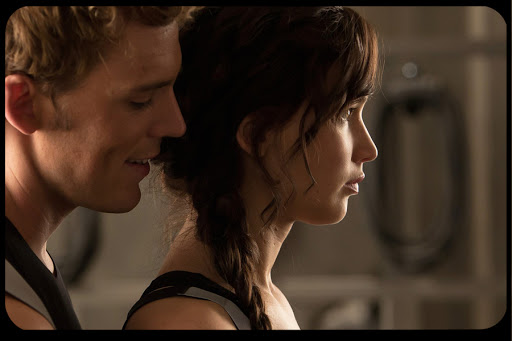The second installment of the hugely successful young adult trilogy, The Hunger Games, just hit theaters today. The movie adaptation of The Hunger Games: Catching Fire has a lot to live up to, including the enormous shadow cast by the original written trilogy and the first 2012 film adaptation, but the reviews already rolling in seem largely positive. That being the case, you might find yourself having to take some young people eager to ride the Hunger Games wave to the cinema – so what exactly will you be getting yourself into when you watch these films or read their written counterparts?
The series isn’t a perfect addition to the hallowed halls of literary fiction, but as far as young adult books go, The Hunger Games can at least stand up to the likes of Twilight or Warm Bodies. Unlike the latter examples, The Hunger Games has a lot more going on in its plot than just scintillating romantic tension between forbidden lovers. As many already know, The Hunger Games is set in a dystopian future where North America is united into something called “Panem” under a totalitarian regime known as “the Capitol.” The protagonist, Katniss Everdeen, lives in one of the impoverished twelve districts, and as such must participate in the annual lottery that chooses one male and one female under the age of 18 to participate in the Hunger Games and fight to the death.
It’s not a brand new idea by any means. The critically acclaimed 1999 Japanese novel (and later film adaptation) Battle Royale also plays into the concept of a dystopian future where children are forced to kill each other in a “game” scenario in order to prove a political point. But The Hunger Games takes a positive divergence in the protagonist of Katniss Everdeen. From our first introduction to this character, the audience immediately understands that she is fiercely protective of her family. Within the first few chapters, she sacrifices herself for the sake of her younger sister, catapulting into certain death by volunteering to take her sister’s place in the Hunger Games.
One good side effect of the story is the political and socioeconomic undertones of The Hunger Games that could succeed in getting younger audiences thinking. How did Panem get this way? What are the consequences of relying on a totalitarian government? The blatant excess and materialism of the Capitol can become a jarring self-portrait of the dangers inherent in consumerism. The privileged members of the Capitol are uninformed about the realities of poverty and suffering just outside their doors and remain cocooned in luxury. Their interests revolve mainly around the latest fashions and trendiest hairstyles, and as such their social awareness and willingness to challenge the obviously corrupt system that provides them with wealth is dulled by lavish distractions.
The Hunger Games also presents an uncomfortably realistic future to first-world citizens. The parallel is exaggerated, of course, but many of us can unfortunately sympathize with the morbid fascination that media outlets have over such tragedies as public shootings. Our culture has an obsession with death and the more gruesome aspects of life – the Capitol’s morbid thirst for media-streamed violence doesn’t seem that impossible when compared to our own omnipresent media portals featuring constant access to depravity. Katniss ends up becoming an integral part in ending the obsession and her draw as a protagonist comes first and foremost with her desire to witness to life and to protect her family at all costs. In fact, some of the last lines in the final book, Mockingjay, include Katniss’s explanation that she “make[s] a list in [her] head of every act of goodness [she’s] seen someone do” and that continues to fuel her ability to survive despite the cruelties she has witnessed.
Of course, the inevitable romantic draw in The Hunger Games is sadly present, as seems to be the case with most young adult fiction nowadays. Despite Katniss’s independence and ferocity as a protagonist, she still falls prey to the trope of having to choose between two men. This is a negative in what would otherwise be a decent example of young adult fiction, but luckily, the majority of the plot relegates the romance to the backburner in favor of the more pressing political issues that Katniss’s defiance of the Capitol causes. And Katniss’s primary romantic interest, Peeta Mellark, is a far cry from the raw aggression, chiseled manliness, and flavorless personality of Twilight's Edward Cullen. Peeta isn’t a page-turning character on his own, but his relationship with Katniss is decidedly emotional and largely unsexual (no Twilight-esque descriptions of porcelain abs or butterscotch eyes here). It’s a relief in and of itself to not have to sort through pages of awkwardly placed sexual tension just to send a message of the two characters’ attraction to one another. Peeta and Katniss’s love forged through crisis and the preservation of one another’s well-being speaks for itself.
The Hunger Games is mediocre at best in terms of ingenuity and moral message – but it’s not damaging to a young person’s social conscience either, and might even make some valuable impressions on the topics of consumerism and self-sacrifice. So if you find yourself chauffeuring your children, siblings, or friends to this newest flick, don’t despair – you’ll get more out of this series than from the likes of Twilight.

